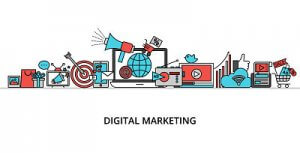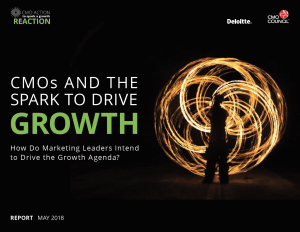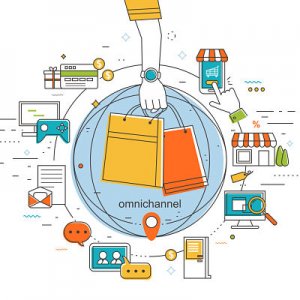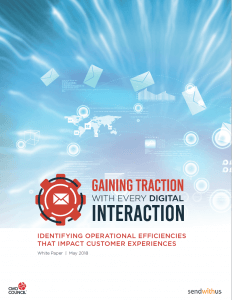Marketing automation doesn’t mean autopilot
June 27, 2018
 Marketing automation is nothing new, but it is enjoying a renewed focus in conversations about how to stay connected to your prospects and customers. As brands get better about creating content and understanding that our potential customers watch and interact with us for a long time before they’re ready to buy – we have to be prepared to stay in touch in a meaningful, useful way for a lot longer than just the active sales cycle.
Marketing automation is nothing new, but it is enjoying a renewed focus in conversations about how to stay connected to your prospects and customers. As brands get better about creating content and understanding that our potential customers watch and interact with us for a long time before they’re ready to buy – we have to be prepared to stay in touch in a meaningful, useful way for a lot longer than just the active sales cycle.
Just to make sure we’re all talking apples to apples — marketing automation is the tactic of using software to automate repetitive marketing actions like emails, enewsletters, responses to web inquiries, social media, and other website-driven actions.
We’re all the recipient of marketing automation every day. When we download a checklist off of someone’s website and over time, we start receiving emails related to that topic – that’s marketing automation. When we take a quiz and then are directed to a landing page where we can learn more about our results/possible solutions – that’s marketing automation. When we get a shipping update email in real time – that’s marketing automation. When we sign up for an email-based course, you guessed it. That’s marketing automation.
If you’re a B2B company, don’t think this is only a consumer-facing tool. In fact, it’s the B2B marketers that are really leveraging all of the nuances of this tool.
As you’ve heard me preach many times before – it’s about having the right strategy. Don’t fool yourself into thinking that once you pick the right tool, you’re all set.
Marketing automation is most often used as a lead generation tactic, and it’s a very good one. But it can also serve your current customers from a customer service point of view. Your clients often feel silence after the sale. You chased and wooed them before they bought but after the transaction, they sometimes get less attention. Marketing automation is a way to make sure that never happens.
A sizable part of the marketing process can be automated. Yet many companies and marketers tend to focus on specific tools or features they’re missing rather than on how their marketing automation platforms fit within their marketing strategies.
Today, only 10% of marketers are confident in their ability to execute comprehensive marketing automation programs as part of a larger marketing strategy, according to a recent a Forrester study. That’s not because they picked the wrong software; it’s because of the strategy. A sound marketing strategy should be anchored by clear goals. Those could include thought leadership, lead generation, gaining website traffic or something else. Without establishing these goals, you won’t be able to get anywhere — even with the best marketing automation software.
Remember that marketing automation isn’t a tactic in and of itself. It’s a mechanism to help you amplify the effectiveness of your marketing tactics, and you should be clear about what those tactics are. Are you going to be sending out newsletters or an email nurture campaign, or are you going to focus on collecting inbound leads by providing access to gated content? Be clear from the beginning, because all of your subsequent decisions will be based on maximizing these tactics.
Once you sort out all of that, you’re finally ready to find the right tool. But don’t even start looking until you’ve thought through how you want to use it.
If you implement marketing automation correctly, you can expect to see positive results relatively quickly. Don’t rush into it, though, especially if you don’t have any previous marketing automation experience. Take the time to build a sound strategy, and then invest the time and resources to really learn the platform you invest in. The results will follow if you stick with it.
More




 A new study from the Chief Marketing Officer (CMO) Council and Deloitte, surveying close to 200 chief marketers worldwide, revealed many CMOs are still focused on the traditional storytelling aspect of their position and are less comfortable with aspects associated with driving growth, including acting as revenue science practitioners and customer experience architects.
A new study from the Chief Marketing Officer (CMO) Council and Deloitte, surveying close to 200 chief marketers worldwide, revealed many CMOs are still focused on the traditional storytelling aspect of their position and are less comfortable with aspects associated with driving growth, including acting as revenue science practitioners and customer experience architects.


 Despite a mandate to drive growth, chief marketers are still stuck in a decade-long rut that has yet to see them fully optimize the lifetime value of existing customers. In 2008, when asked if brands were fully realizing the revenue potential of customers, 76 percent said no. Ten years later, 77 percent of respondents to the same question in a new Chief Marketing Officer (CMO) Council audit still say no, and 10 percent say they are not even sure.
Despite a mandate to drive growth, chief marketers are still stuck in a decade-long rut that has yet to see them fully optimize the lifetime value of existing customers. In 2008, when asked if brands were fully realizing the revenue potential of customers, 76 percent said no. Ten years later, 77 percent of respondents to the same question in a new Chief Marketing Officer (CMO) Council audit still say no, and 10 percent say they are not even sure.